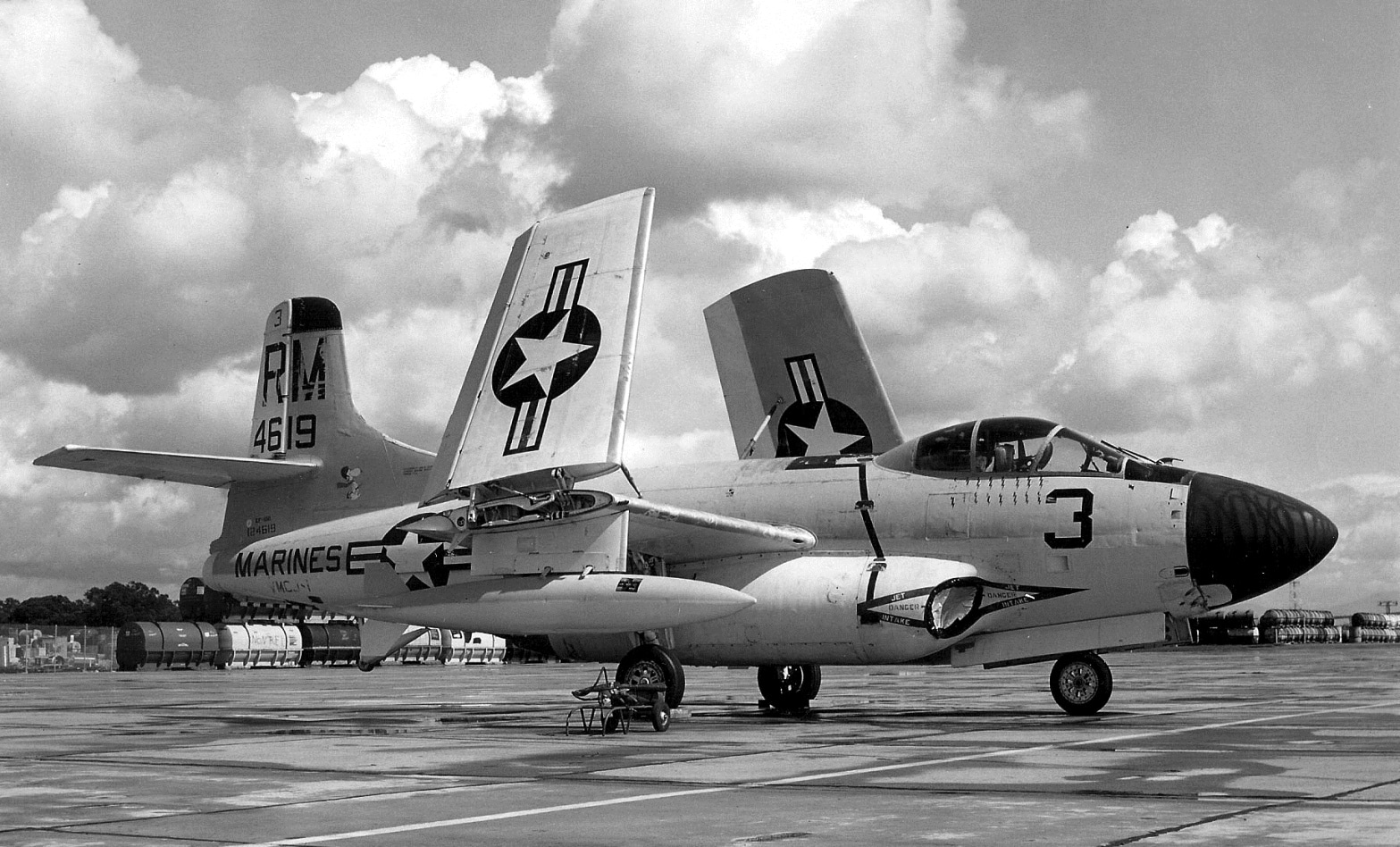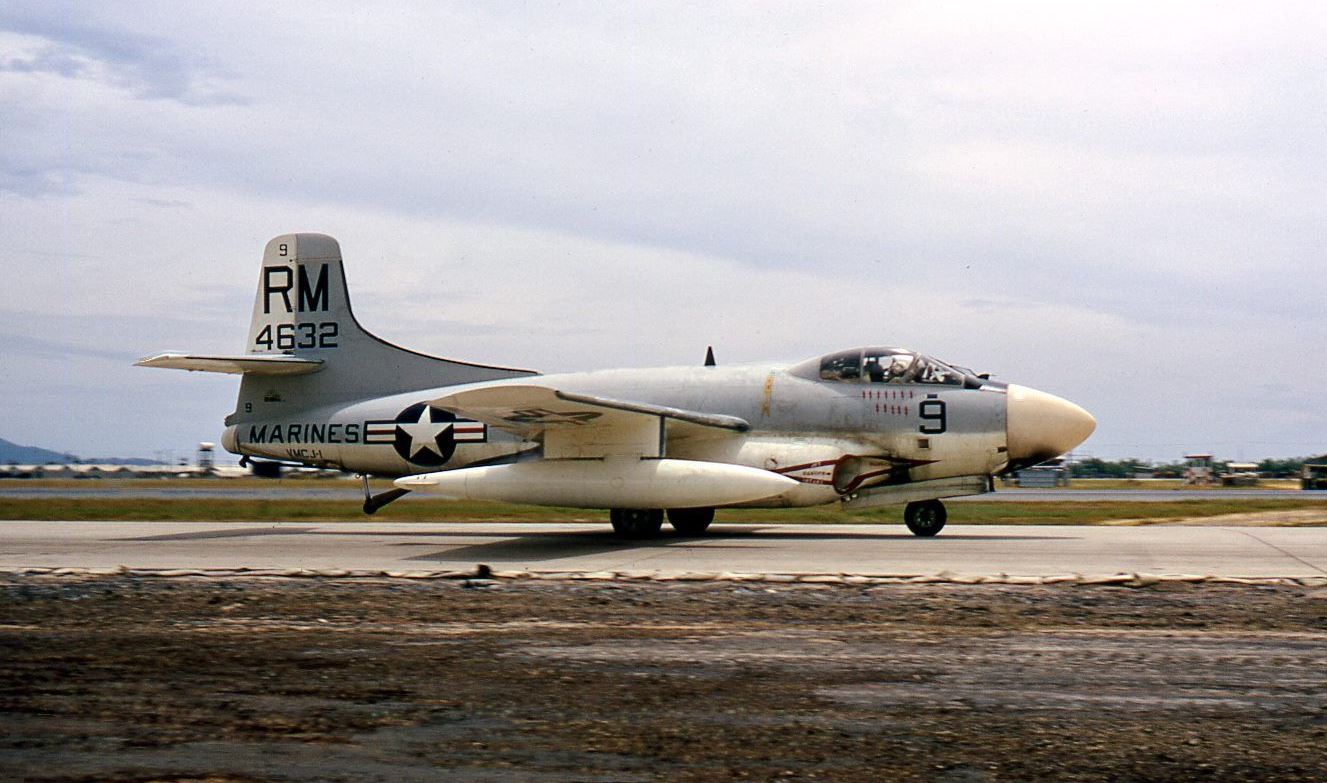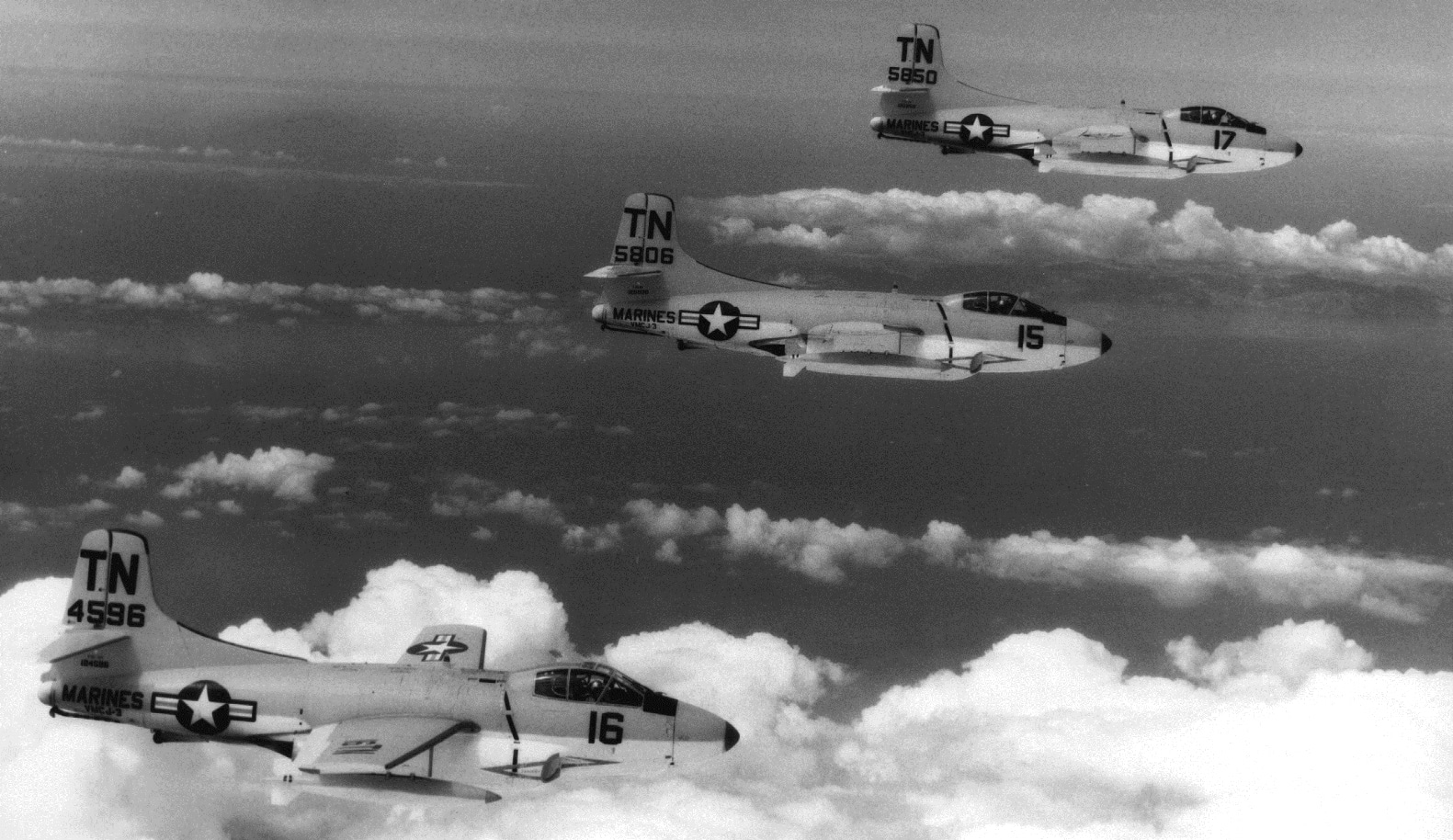Jack of All Trades
After the Korean War, the F3D performed valuable service as a development platform for the country’s first generation of air-to-air missiles- the Sparrow I, II, and III. Developed at the Navy’s Pacific Missile Test Center, the Sparrow series of missiles heralded an entirely new category of weapon- the radar-guided air-to-air missile.

The Electronic Warfare Pioneer
During the late 1950s, several Marine F3D-2s were re-configured as electronic warfare aircraft. Some additional Skyknights were also converted to trainers. F-3Ds outlasted many of their contemporaries in these roles, seeing service into the 1960s and experiencing both the aircraft color scheme and designation changes of the time. In 1962 the F3D-1 Skyknight became the F-10A and the F3D-2 Skyknight became the F-10B.

Somebody’s Always Listening
The Marine electronic warfare version of the F-10B, the EF-10B, began its eavesdropping career during the Cuban Missile Crisis, locating and monitoring the activities of the Soviet air-defense radars on Cuba. EF-10Bs then served in the electronic warfare role during the Vietnam War from 1965 until 1969, becoming the only fighter aircraft to serve with American forces in both Korea and Vietnam. Even though no more than ten EF-10Bs were in service in Vietnam at any given time, the VMCJ-1 Golden Hawks effectively used their EF-10Bs as surface-to-air missile (SAM) radar and guidance system jammers. The EF-10Bs also dropped radar-confusing chaff over the North Vietnamese radar sites on these “Fogbound” missions.

High Risk Missions Result in Losses
Several of the EF-10Bs were lost during these risky missions and their role was gradually taken on by the more advanced, capable, and survivable Grumman EA-6A Electric Intruder. Other aircraft taking over some of the electronic warfare load were the Navy Douglas EA-3B and EKA-3B Skywarrior and the Air Force RB-66 and EB-66 Destroyer. Continuing to contribute, the EF-10Bs flew sorties in lower-threat areas until they rotated out of Vietnam in October of 1969. With a nod toward tradition and a sense of history, the first Skyknight pilot to shoot down a Mig-15 in Korea also flew the last operational Marine EF-10B sortie in May of 1970.

Paved the Way for Whales, Prowlers, and Growlers
A total of only 268 Skyknights were produced, but the aircraft served several purposes over its 20 year service life. Perhaps more importantly, the F3D was an important evolutionary step on the way to the Grumman Prowlers and Douglas Whales that eventually replaced it. The Skyknight was an important aircraft in the development of modern all-weather fighter and electronic attack aircraft…even if they did call it “DRUT.” Spell it backwards. Get it?
[youtube id=”L7c-RKjDdLY” width=”800″ height=”454″ position=”left”]
